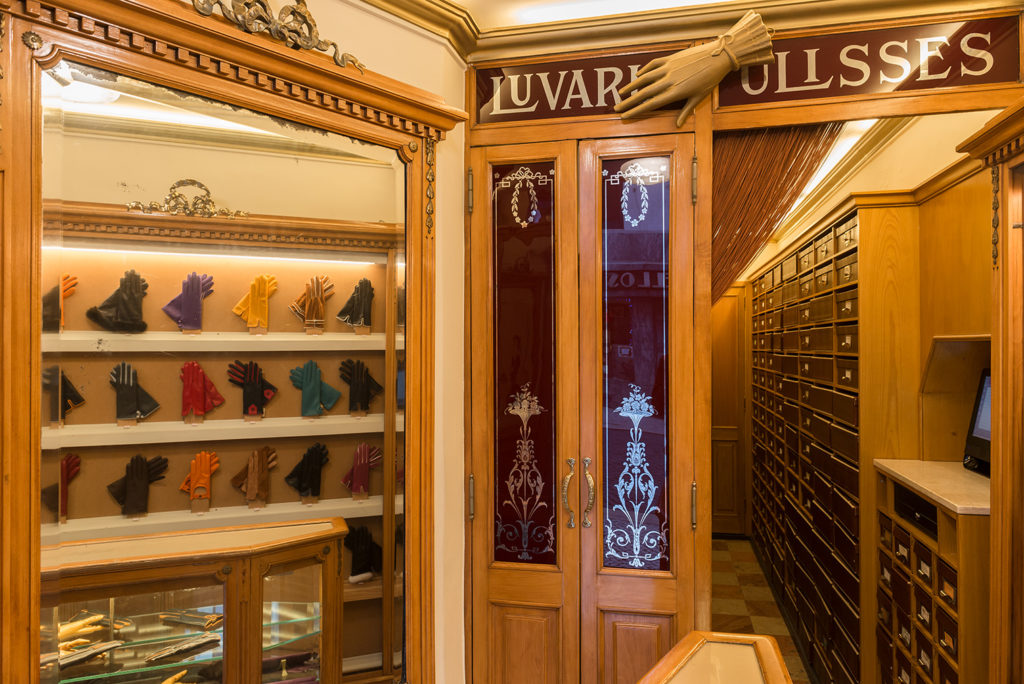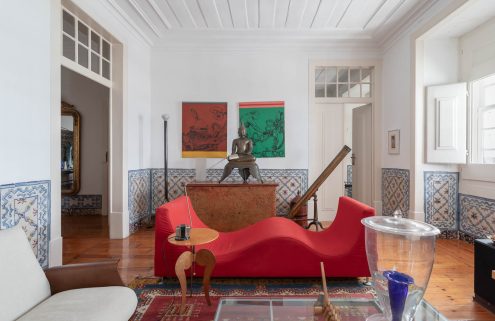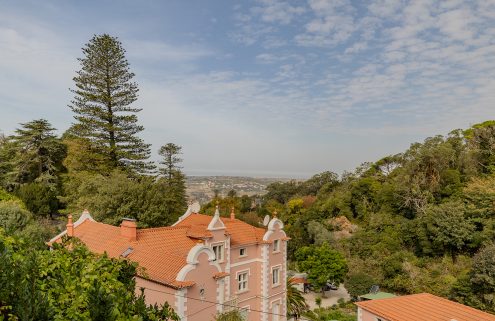
When Caza das Vellas Loreto opened in Lisbon’s dense Chiado neighbourhood in 1789, it sold a product that was a technological revolution of its time – the candle – bringing with it easy, mobile lighting and changing the face of city life.
Today candles still fill the wooden display cabinets of Caza das Vellas Loreto, one of the oldest stores in the rapidly transforming Portuguese capital. But in the last decade, the pressures on local real estate and commerce in Lisbon have seen scores of historic businesses close – two years ago the capital had around 300 ‘historic’ shops, yet today just 180 remain. In the neighbouring Baixa area, they’re being drowned out by some 93 stores selling Ronaldo shirts made in China.

Thankfully a new City Council initiative has stepped in to conserve Lisbon’s retail heritage. ‘Lojas Com História’ (or ‘Historic Shops’) was born in 2015 from the need to protect the types of commerce most characteristic and identifying of city. ‘They are the defining feature that makes the city stand out,’ says project coordinator Sofia Pereira.
Among the stores it helps preserve are speciality goods sellers and makers, including herbalists, engravers, seed sellers, leather merchants and toy makers, who often have adjacent workshops. Many of them are the last of their kind in the city, and most are in Chiado and Baixa.

Just opposite Caza das Vellas Loreto is Farmácia Barreto (established in 1876), a pharmacy selling medical products like althea root and mezereon pomade; and Tabacaria Martins (1916), a tobacconist with an iconic timber interior.
Other striking establishments include glove shop Luvaria Ulisses (1925), the smallest store in Lisbon; Hospital das Bonecas (1830), a hospital for dolls; and Francisco Soares da Silva (1840), the last surviving manufacturer of fabric trimmings and ornaments in the city.

Luvaria Ulisses, a glove store on Rua do Carmo 87-A. Photography: Miguel Savedra and Luis Aniceto

Luvaria Ulisses, a glove store on Rua do Carmo 87-A. Photography: Miguel Savedra and Luis Aniceto

Hospital das Bonecasa, a hospital for dolls on Praça da Figueira 7. Photography: Miguel Savedra and Luis Aniceto

Hospital das Bonecasa, a hospital for dolls on Praça da Figueira 7. Photography: Miguel Savedra and Luis Aniceto

Ginjinha Espinheira, on Largo de São Domingos 8. Photography: Miguel Savedra and Luis Aniceto

Francisco Soares da Silva, a fabric shop, on Tv. Fábrica dos Pentes 4A Photography: Miguel Savedra and Luis Aniceto

Confeitaria Nacional pastry shop on Praça da Figueira 18B. Photography: Miguel Savedra and Luis Aniceto

Confeitaria Nacional pastry shop on Praça da Figueira 18B. Photography: Miguel Savedra and Luis Aniceto

Confeitaria Nacional pastry shop on Praça da Figueira 18B. Photography: Miguel Savedra and Luis Aniceto

Primeira Casa das Bandeiras, a flag store on Rua dos Correeiros 149. Photography: Miguel Savedra and Luis Aniceto

Farmácia Barreto, on Rua do Loreto. Photography: Miguel Savedra and Luis Aniceto

Joalharia Ferreira Marques, a jewellery store on Praça Dom Pedro IV 7. Photography: Miguel Savedra and Luis Aniceto. Photography: Miguel Savedra and Luis Aniceto
To become part of this network, establishments need to fulfil certain criteria concerning what product they sell and how unique and national it is, their architectural merit, and what place they occupy in Lisbon’s collective memory.
Architect Miguel Marques Santos – one of the selection team – told El País: ‘We value 21 criteria and the candidate must get at least 11; in the chapter of activity, we evaluate if they have own-brand products; in design heritage, interior design or if there are works of art; and in the intangible chapter, its history.’

Successful applicants are given financial assistance and the support of a dedicated council team. So far 82 shops are part of the ‘Lojas Com História’ initiative and a further 120 have submitted applications.
According to Pereira, one of the key challenges of the project is to educate landlords about the importance of the shops, and prevent forced evictions that have seen many historic stores replaced by new developments and higher-paying tenants.

‘Since the start of the project, we believe that Lisbon’s civil society has become more aware of the city’s commerce,’ Pereira says.
‘Lojas Com História’ draws on international precedents in Barcelona and Rome but takes things a step further. In the face of technological evolution and changing consumption habits, it looks to the future as well as the past – embracing modernity with a communication strategy to promote the ‘Lojas Com História’ brand and the series of identities within it. It’s all part of the ambitious mission for keeping Lisbon’s character alive.

Read next:
How Lisbon’s kiosks are making a comeback
Inside Lisbon’s booming coworking and tech scene
Get to know Lisbon in 15 buildings






















